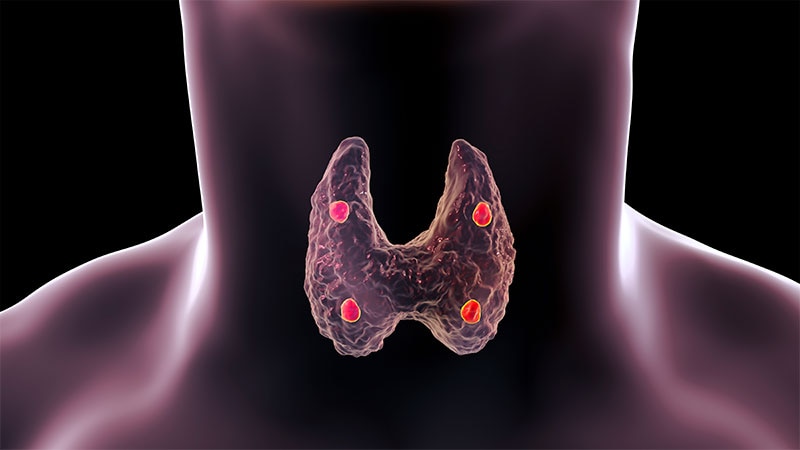TOPLINE:
Among postmenopausal women with primary hyperparathyroidism, parathyroidectomy led to significant improvements in lower limb muscle strength and volume, along with reductions in fat fraction. Furthermore, the surgery activated molecular pathways similar to those induced by exercise training, despite no changes in levels of physical activity.
METHODOLOGY:
- Researchers in Sweden conducted a prospective observational study to examine clinical and molecular effects of parathyroidectomy on skeletal muscle function in 21 postmenopausal women (mean age, 68 years) with primary hyperparathyroidism.
- Participants underwent assessments for lower-body muscle strength (using timed stands and peak torque tests in 17 participants) and muscle composition (using MRI in 16 participants) and had muscle biopsies for the transcriptomic analysis before the surgery and at 3-month follow-up.
- Anthropometric and clinical parameters, along with physical activity levels (assessed using standardised questionnaires in 17 participants), were measured before the surgery and again at 3-month follow-up.
TAKEAWAY:
- Parathyroidectomy resulted in a decrease in ionised and total calcium levels (P < .001) and parathyroid hormone levels (P = .013) and a significant increase in vitamin D (P < .001) and creatinine (P = .003) levels.
- After surgery, muscle strength improved, with a shortened average time in the timed stands test (before vs after surgery: 25.5 vs 20.1 seconds; P < .001); both maximal strength and endurance of the quadriceps muscle also increased markedly (P = .002 and P = .004, respectively).
- Muscle volume increased (before vs after surgery: mean, 1193 vs 1217 cm3; P = .023) and fat fraction declined (P = .013), although patients reported no changes in the level of physical activity (P = .156).
- The transcriptomic analysis identified 981 differentially expressed genes post-surgery; these genes activated pathways that remodelled skeletal muscle in a manner similar to exercise, despite no changes in levels of physical activity.
IN PRACTICE:
“Incorporating skeletal muscle assessments into surgical referral guidelines could help prevent muscle decline, particularly in aging individuals, thereby reducing morbidity and supporting healthier aging trajectories,” the authors wrote.
SOURCE:
This study was led by Sofia Björnsdotter-Öberg, Karolinska Institutet, Stockholm, Sweden. It was published online on July 21, 2025, in The Journal of Clinical Endocrinology & Metabolism.
LIMITATIONS:
The authors did not mention any limitation for the study.
DISCLOSURES:
This study was financially supported by the Swedish Society of Medicine, Lisa and Johan Grönberg Foundation, and Swedish Research Council. Some authors reported receiving awards, grants, and financial support from the Diabetes Wellness Network Sverige, Novo Nordisk Foundation, and Swedish Research Council. The other authors reported having no conflicts of interest.
This article was created using several editorial tools, including AI, as part of the process. Human editors reviewed this content before publication.
Source link : https://www.medscape.com/viewarticle/surgery-boosts-muscle-recovery-hyperparathyroidism-2025a1000jr2?src=rss
Author :
Publish date : 2025-07-29 12:00:00
Copyright for syndicated content belongs to the linked Source.
